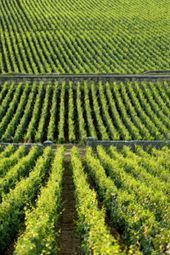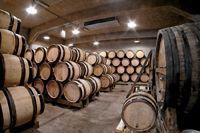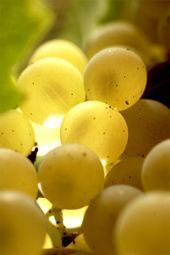 | There have been Leflaives in the region since 1580, but the first traces of Domaine Leflaive emerged when Claude Leflaive came to live in the domaine's present buildings in 1717. At that time they had some 5 hectares of vines. The domaine itself was created by Anne-Claude's grandfather Joseph, who came to Burgundy in 1905 after the failure of an unsuccessful business venture, and an adventurous life which included a period in Indochina, and being one of the engineers who built the first French submarine. Over the next few years, with the price of vineyards at an historical low after the devastation caused by phylloxera, he was able to buy 25 hectares of vines and a number of buildings in Puligny. When Joseph died in 1953, the running of the domaine was taken on by his sons Joseph-Régis and Vincent. They did not live in Puligny, but visited regularly, particularly of course at harvest time. After some time abroad, Anne-Claude returned to take an active interest in the domaine. She took full control on the death of her father in 1993, since when the quality of the wines has improved consistently. |
| Le Montrachet lying across the middle of the Grand Cru hillside, below Chevalier and above Bâtard, with quite deep soil containing a level of manganese which gives tremendous mineral complexity to the wine. Leflaive's Montrachet should, without exception, be kept for a minimum of 15 years before drinking. Chevalier Montrachet, at the top of the hillside, these vines are at an altitude of around 250m in very poor, chalky soil. The south-east exposure is superb: finesse and elegance are the hallmarks of this great vineyard. Bâtard Montrachet, like Bienvenues Bâtard Montrachet, Bâtard lies at the base of the Grand Cru hillside, where the soil is deeper than higher up the slope. On slightly heavier soil than Bienvenues, the wine is opulent and powerful, but always with a very fine structure of acidity to maintain its elegance. |  |
 | Bienvenues Bâtard Montrachet, a small enclave at the northern end of Bâtard Montrachet, the aeration of the soil is extremely important here to combat the higher humidity. At 48 years of age, the vines are the domaine's oldest, and produce wine of tremendous finesse and length. Puligny Montrachet 1er Cru Les Combettes, the most northerly of the Premiers Crus, Combettes abuts Meursault and produces wines that are rounded and plump in style. Puligny Montrachet 1er Cru Les Pucelles, the closest in quality to Grand Cru of all the Premiers Crus, as the Pucelles vineyard is separated from the Grand Cru Bienvenues Bâtard Montrachet by nothing more than a narrow road. The wine is characterised by its complexity, finesse and length. Puligny Montrachet 1er Cru Les Folatières, the highest of the Domaine's Premier Cru vineyard sites, with very shallow, chalky soil. The wines of Folatières are remarkable for their great finesse and mineral structure. Puligny Montrachet 1er Cru Clavoillon, a slightly lower-lying easterly continuation of Folatières with deep, though still stony, soil. Clavoillon gives density, depth and power, and in recent years has been producing wines of quite exceptional quality. |